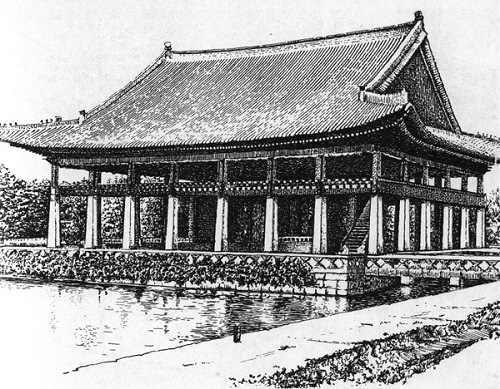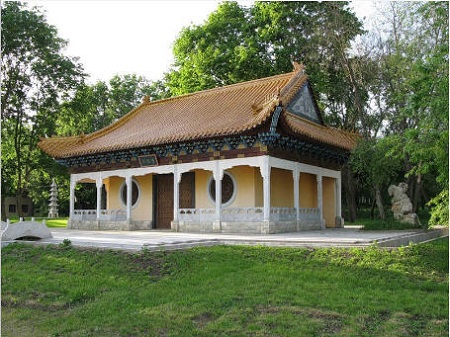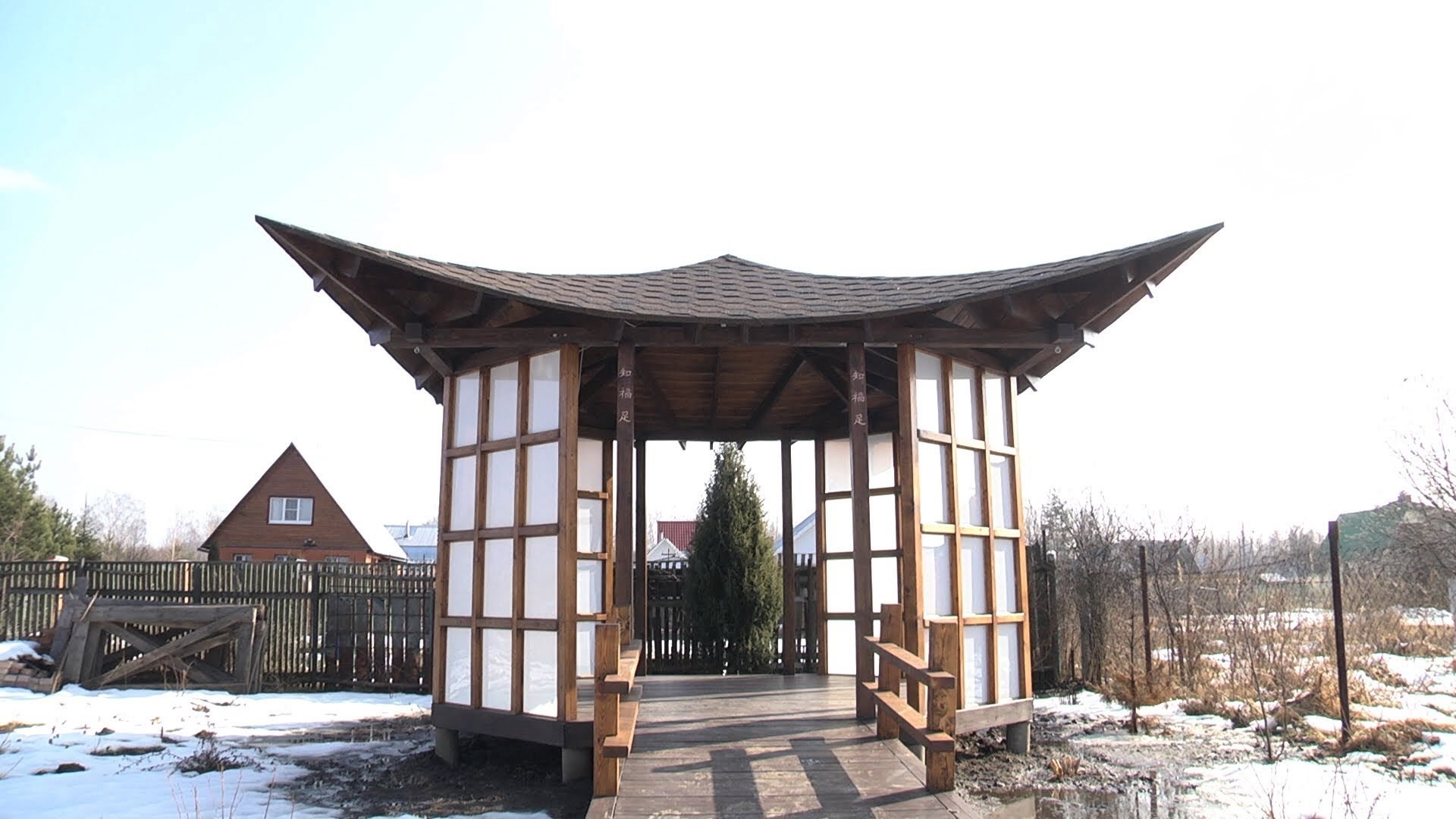Unusual cultural traditions, exotic rites and sacraments, a variety of religious beliefs and teachings - all this, in the aggregate, very much distinguishes the countries of the East from European. Nevertheless, it is increasingly possible to observe elements of oriental culture in the design projects of houses and buildings in Western countries, in decorating the interior of the premises in Europe.
The introduction of elements of oriental style in the design of the facades of houses or in the decoration of apartments makes them look unusual, attractive and fresh. Perhaps this explains the increasing distribution in the construction of such unusual, at first glance, elements such as the Chinese roof. But, of course, the construction of the Chinese roof is an adornment of private houses, it will significantly distinguish a private building from other buildings of the same type.
Content
A beautiful legend or a desire for practicality?

If we consider the emergence of roofs of such an unusual shape, then there are many legends explaining their occurrence.
Here is just one of them. In ancient times, dragons lived on the roofs of houses, which guarded a person’s dwelling, so that evil spirits could not do anything to harm the owners of the house. And when they had little dragons, then they needed to learn how to fly.
For this, people built such roofs with steep and curved ramps in the form of jumps. When it comes time to learn to fly, dragons will slide down the ramps and thus, thanks to the curved shape of the roof, will be able to fly up, not fall down. Thrown into the air, they would be able to stay in a state of free fall longer, which would allow them, working with their wings, to learn how to fly more quickly.
Wonderful legend, isn't it? Who knows, maybe once upon a time it was not a legend at all, but had real grounds under it? But seriously, this shape of the roof is determined primarily by the geographical features of the region.
After all, Chinese territories are very often subject to very heavy rains, so the erection of a roof of this form was extremely practical. If it rains heavily, then you need to somehow protect the house from flooding. Roofs with a strong angle of inclination and curved slopes allow the water to go off very quickly, without stopping, and thanks to the bends, “fly away” far from the house, thereby preventing flooding of the areas adjacent to the house.
So the emergence of such a shape of the roof is not only unusual and beautiful forms that attract attention, but, above all, it is an urgent need for a given place of residence.
No analogues?
The house, which was erected in an oriental style, cannot be confused with any other. The main feature that distinguishes it from European buildings, and is a characteristic roof with curved edges that seem to look into the sky. This form of roofs is quite common not only in China, it can also be found in Japan and Korea.
For ordinary people, the Chinese-style roof will seem very interesting, original and amazing. Many believe that she simply does not have analogues and competitors.
But in reality this, of course, is far from the case. Once upon a time in European culture, there were hip roofs with different slopes, as well as half-hip roofs, the so-called "Dutch" roofs.They also have a very large slope, but this original rib bend inherent in Chinese roofs is missing.
However, on this all the sameness ends. And although they can be quite similar in form, they have significant differences in the structure and form of load-bearing walls and structures. Therefore, it is first of all necessary to decide for yourself whether it will exactly correspond to all the canons of the construction of Chinese roofs or whether it is worth just imitating one.

If the construction of the roof is the last stage in the construction, then it is best, of course, to resort to imitating this form of the roof. Since the exact adherence to the canons of the construction of Chinese roofs implies the construction of walls and other structural elements according to completely different principles, significantly different from European ones.
Another decisive argument in favor of imitation is the high consumption of building materials during the construction of a real Chinese pagoda, as well as rather complicated installation work, for which it is best to invite specialists.

To build a roof resembling a Chinese one, certain roofing materials must be used. Basically today, soft materials from bitumen are used for these purposes. Most often they use bituminous tiles or, as an option, apply the popular euroroofing material.
Roof imitation based on a hanging rafter system
This is the most suitable option for the construction of a roof in an oriental style. Hanging rafters include the following elements:
- rafter leg;
- puff
- trimmer;
- strut;
- supporting beam;
- overlay;
- fastening bolts.
First of all, in the design of the rafter system, a very important part is the tightening. The purpose of its installation is to prevent the rafters from dispersing. The whole roof load should be taken by struts. It is worth noting that the struts in the traditional eastern erection of roofs were completely absent, and the load was transferred to two puffs installed horizontally and with vertical posts fixed to them.
Puffs in the Chinese version work mainly on bending, and the use of materials such as bamboo, under the weight of denser materials (for example, tiles), naturally bend the corners of the roof up.
The difference from the principles of roof construction in Europe lies in the fact that in the distribution of loads, Europeans more often used triangular shapes in roof systems, while in the east they prefer rectangular ones.
Features of the device and construction of eastern roofs
The "classic" roof, but in the Chinese style has the following very characteristic features:
- frame construction in which all loads are distributed only in the vertical and horizontal planes;
- the corners of the roof are bent up;
- the overhangs of the roof are taken away from the external walls of the house (outside the perimeter) to protect the walls from rain, and the rooms inside - from an excess of sunlight;
- the Chinese-style roof has a very steep slope in its upper part, and the angle below decreases very sharply;
- part of the overhangs, which are located between the corner edges of the roof, is used to quickly remove precipitation;
- multi-tiered solutions are very often used.
The Chinese roof, so how to make a design that will not only decorate your home, but will also be reliable protection from the weather? The construction of the original oriental roofs has its own characteristics and difficulties.
Let's consider some options for how to create a Chinese roof with your own hands:
- the original construction of the building is copied in great detail from the very foundation to the highest point of the roof;
- a truss truss of the necessary shape is installed (with support on the main walls);
- the roof is given the corresponding characteristic shape with the help of decorative elements (on standard hanging rafters);
- make load-bearing bent structures not of wood, but using more flexible and technological metal beams.

If your compliance with the original Chinese roof is more important than upcoming costs and some inconvenience, then it is worth starting construction according to all the ancient canons. Although such a house is likely to become less durable built with the latest technology. Surely, insulation and reinforcement of the walls will be required.
The appreciation and complication of work during the construction of a complex rafter system of such a roof is inevitable, but the roof will turn out to be almost identical to a real Chinese one. Decorative elements (skates, pads, etc.) will allow you to create the appearance of the roof is really close to the east with Chinese characteristics.
The disadvantage is that the metal construction of the supports is expensive, and there are also difficulties in roof sheathing with roofing material. However, using light alloys, you can get any shape of the roof with a sufficiently high degree of strength.

If you still decide to make an eastern roof, then its Japanese version will cost much cheaper than Chinese, since the main difficulty is the curved edges of the roof, which are not in the Japanese roof. At the same time, the choice of material for its coating is expanded.
The eastern owners of beautiful pagodas and small Chinese houses created them in accordance with their natural and national characteristics. And today, builders in different countries successfully cope with the task of building complex, unique and reliable Chinese roofs.
So, getting acquainted with how to build a roof in the Chinese style, please do not neglect the advice and weigh all the arguments in favor of building an oriental roof for your home. Think about the cost and whether it will suit our Russian climate, and specifically, the weather conditions in your area. If the arguments “for” and the desire to amaze others were outweighed, then feel free to get down to business and start creating a project.





Alas, no comments yet. Be the first!